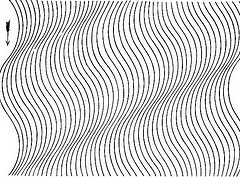Physical Therapy School

A career in physical therapy can be defined by the school you choose to go to for your education, therefore, a lot of care and thought must be put in for you make the best decision. Take the time to sit down and determine your career and personal goals, then try to find the closest match you can with over 200 schools with accredited programs to choose from before you make this all-important decision to avoid any regrets and disappointments.
The study of physical therapy requires serious academic commitment, in which science plays a strong role. In addition to this, the learning of therapeutic techniques is also prioritized. Training in developing strong interpersonal skills and the ability to be innovative at work is also included in the programs, however, you do need to check them out individually to find the best match for your personality and circumstances.
One of the best indicators of the quality of the school’s program is its ranking. Part of the good reputation a school earns is from the members of its faculty, their experience and their contributions to research. You can also check out how many students per category (DPT, MPT, PT, PTA) the school graduates each year and what their passing scores are for the State Board Exams. This may be a telling indicator of how well the school’s program was able to prepare these students for their licensing requirements.
Other factors you need to consider include: program and faculty size, campus location, internships and affiliations, mentorship, tuition costs and financial aid support, prerequisites and school requirements, graduate support, networking opportunities by way of an alumni association and even career counseling services.
Today, there are basically two degrees you can go for: the master’s degree or the doctorate degree in physical therapy. These two programs replaced the bachelor’s degree at the turn of the century. The main difference between the two is length of training and depth of content. For more detailed information with regards to their program content, you can check out the particular school’s website and program offerings.
But to help you come to a better decision consider the following: area of specialization you are interested in and does the school offer it, is their program accredited, is there sufficient practicum exposure, what’s the faculty like and are its professors available for productive interactions with their students, what are the financial aid opportunities like, etc.
With regards to the practicum, find out as much as you can about it. There are instances where the students are so appreciated that they are offered a job after graduation, so find out if the program actually puts you in opportunities to apply what you learned in a clinical setting. Check if there are enough qualified clinical instructors to guide you and find out their commitment to research and their attitude towards advanced and up-to-date therapeutic techniques.
In the end, the search for the most appropriate physical therapy school for you lies in how methodical you are and how well you know what you want. Once you figure this out, you will be on your way to fulfilling your dreams.
Nitin Chhoda has a blog on physical therapy schools. Get a free physical therapy marketing system with a DVD, book on physical therapy marketing and over 8 hours of audio at marketing physical therapy and forever change the way you market your clinic.
Related Physics Articles
